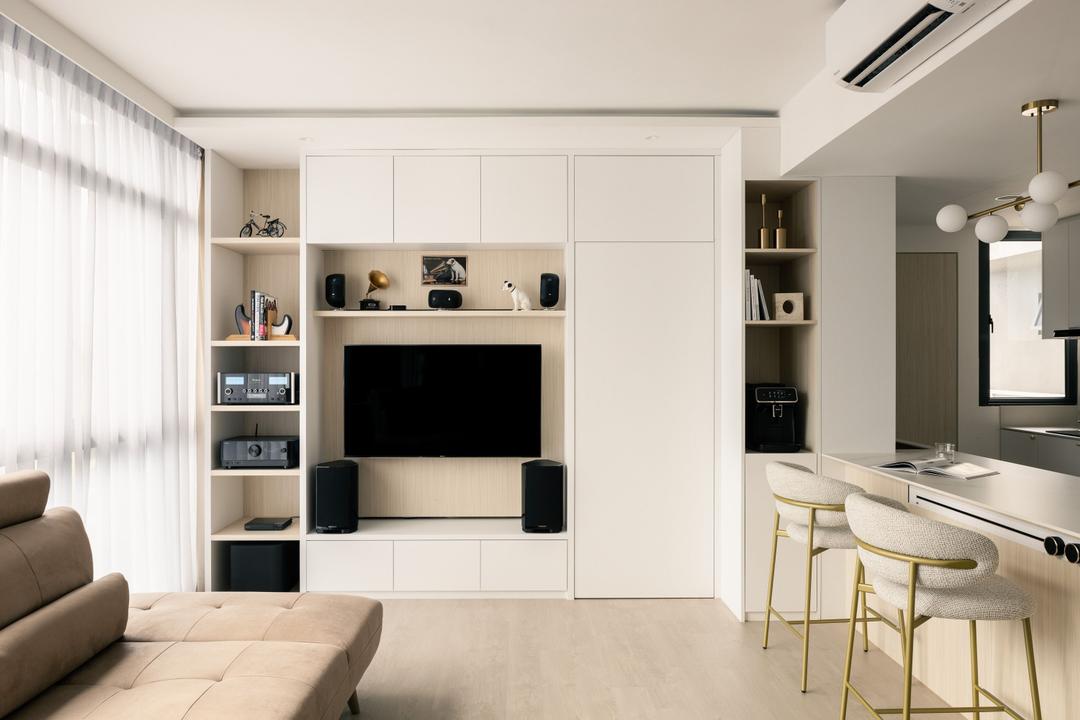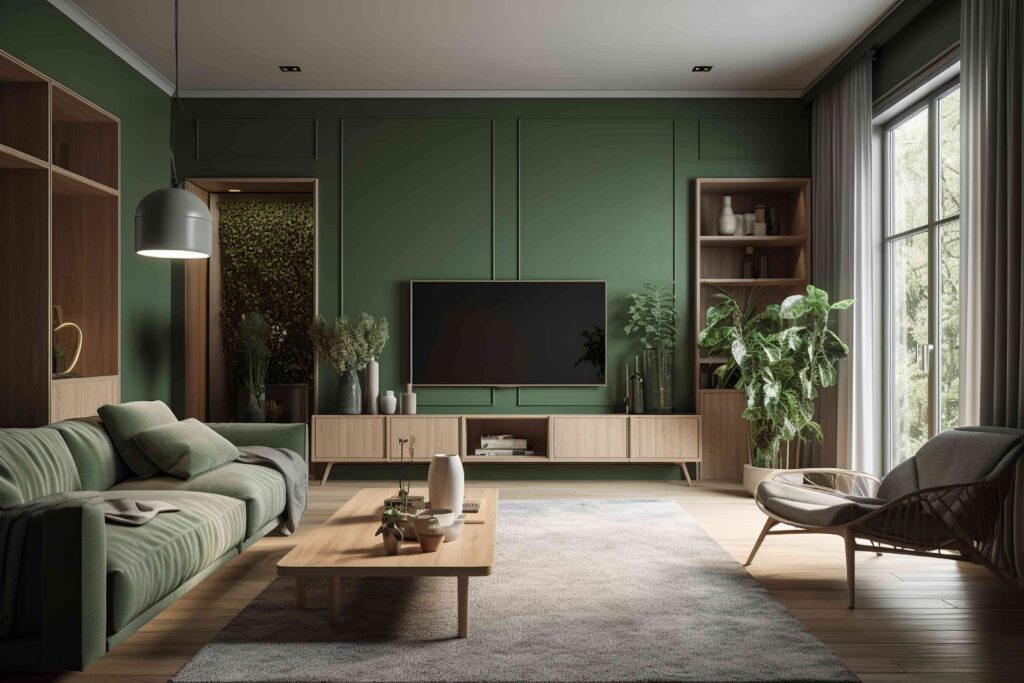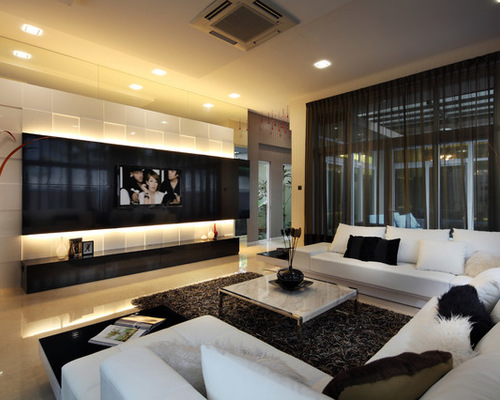Hidden Door TV: Wow Factor Revealed!
Hidden Door TV: Wow Factor Revealed!
The desire for a clean, minimalist aesthetic in home design is constantly on the rise. Open-plan living, streamlined furniture, and a focus on functionality are all key elements of modern interior trends. But what happens when you want to integrate technology seamlessly into this sophisticated environment? This is where the hidden door TV enters the stage, offering a unique blend of form and function that elevates any living space. This isn't just about hiding a television; it's about creating a wow factor, a conversation piece that seamlessly blends technology with design.
This article will delve into the fascinating world of hidden door TVs, exploring their design possibilities, the technical aspects of installation, the various styles available, and the ultimate impact they have on your home's ambiance. We'll examine the advantages and disadvantages, providing you with the necessary information to decide if this is the right feature for your home.
Unveiling the Magic: Design Possibilities and Styles
The beauty of a hidden door TV lies in its adaptability. It's not a one-size-fits-all solution; instead, it offers a canvas for creativity. The possibilities are limited only by your imagination and your interior design style. Let's explore some of the most popular design approaches:

-
The Classic Concealed Unit: This involves integrating the TV into a custom-built cabinet or feature wall. The TV seamlessly disappears behind a hinged door, panel, or even a cleverly disguised artwork, revealing itself only when needed. This style works exceptionally well in minimalist or modern settings, providing a clean, uncluttered look.
-
The Rotating TV: This innovative approach uses a motorized mechanism to rotate the TV from a hidden compartment within a wall or cabinet. The rotation mechanism can be carefully concealed, adding to the illusion. This option offers more flexibility, allowing the TV to be viewed from different angles in the room.
-
The Artful Camouflage: One of the most exciting design directions involves masking the television within a piece of art or a decorative panel. Imagine a stunning landscape painting that subtly hides a high-definition screen behind it. This provides an elegant solution, adding a unique artistic flair to your space. The artwork can match your existing decor, ensuring a cohesive and visually appealing aesthetic.

-
The Bookshelf Surprise: For bibliophiles, integrating the TV within a custom-designed bookshelf offers a fantastic blend of form and function. The television can be hidden behind a cleverly arranged row of books, providing a completely unexpected reveal. This design seamlessly integrates the technology into a pre-existing element of the room.
-
The Mirror Magic: A truly captivating approach involves using a mirrored panel to conceal the television. When the TV is off, the mirrored surface acts as a full-length mirror, reflecting the room and adding a sense of spaciousness. When turned on, the mirror becomes a window to another world. This option offers a touch of sophisticated glamour and is ideal for smaller rooms where maximizing space is key.
The Technical Aspects: Installation and Considerations

Installing a hidden door TV is more complex than simply mounting a standard television. It requires careful planning, precision execution, and often the expertise of professionals. Here are some key technical aspects to consider:
-
Cabinetry and Construction: Custom-built cabinetry is often necessary to house the television and its associated components. This requires precise measurements, meticulous craftsmanship, and consideration of the TV's dimensions, including its depth and weight. The material chosen for the cabinet should complement the overall style of the room.
-
Wiring and Connectivity: Concealing the wiring and cables is crucial for maintaining a clean aesthetic. This necessitates careful planning and routing of cables within the walls or cabinetry. Professional installation is often recommended to ensure proper cable management and avoid potential damage to the walls or electrical systems.

-
Motorized Mechanisms: For rotating TVs or other mechanized systems, the choice of motor and its integration into the design is critical. The motor must be powerful enough to move the TV smoothly and quietly, while also being reliable and durable.
-
Ventilation and Heat Dissipation: TVs generate heat, and proper ventilation is crucial to prevent overheating and damage. The cabinet or wall should be designed to allow for adequate airflow around the TV, ensuring its longevity and performance.
-
Sound System Integration: The choice of sound system should complement the overall design and the size of the room. Hidden speakers, discreet soundbar integration, or even a surround sound system can be incorporated seamlessly into the design.

Advantages and Disadvantages: Weighing the Options
Before committing to a hidden door TV installation, it's crucial to carefully weigh the advantages and disadvantages.
Advantages:

-
Aesthetic Appeal: The primary advantage is the significant enhancement of aesthetic appeal. A hidden door TV provides a clean, minimalist look, eliminating the visual clutter of a traditional mounted television.
-
Space Optimization: In smaller rooms, this can be a significant benefit, maximizing floor and wall space.
-
Flexibility and Customization: The design possibilities are virtually limitless, allowing you to create a truly unique and personalized feature wall.
- Enhanced Ambiance: By seamlessly integrating the television into the decor, a hidden door TV creates a more sophisticated and elegant ambiance.
Disadvantages:
- Cost: Custom installations are significantly more expensive than simply mounting a TV. The cost will vary depending on the complexity of the design and the materials used.

-
Complexity: The installation process is more complex and time-consuming than a standard TV installation, often requiring professional expertise.
-
Accessibility: Accessing the TV and its controls may require more effort compared to a standard mounted TV.
-
Maintenance: Regular maintenance of the moving parts (if applicable) and ensuring proper ventilation are crucial for the longevity of the system.

Beyond the Wow Factor: The Long-Term Impact
The impact of a hidden door TV extends beyond the initial visual wow factor. It transforms your living space into a sanctuary of sophisticated design and effortless functionality. It speaks volumes about your attention to detail, your appreciation for modern design, and your desire to create a home that reflects your personal style. It’s an investment that adds value to your home, both aesthetically and potentially financially, while simultaneously providing a unique and engaging feature that your guests will remember long after their visit.
Conclusion: Embracing the Future of Home Entertainment

The hidden door TV represents a significant leap forward in home entertainment design. It's more than just a technological innovation; it’s a statement of style, a reflection of your commitment to a seamlessly integrated and visually stunning living space. While the cost and complexity of installation are significant factors to consider, the rewards – a breathtaking feature wall that combines technology, art, and design – make it a worthwhile investment for those who appreciate the finer details and strive for a truly unique and memorable home environment. So, are you ready to unveil the magic? The wow factor awaits.
Secret TV, Secret Room: Hidden Door Reveal!

The allure of the hidden room, a secret space tucked away from prying eyes, has captivated imaginations for centuries. From childhood fantasies of secret forts to the intrigue of spy novels, the idea of a concealed chamber holds a timeless appeal. This appeal transcends generations and finds a modern expression in cleverly disguised features within our homes. Today, we explore the exciting world of hidden door designs, specifically focusing on the captivating concept of integrating a secret TV within a feature wall, creating a truly unique and stunning focal point.
The Allure of the Hidden: Why Secret Rooms and Concealed TVs Resonate
The desire for a hidden room isn't merely whimsical; it taps into deeply rooted human needs. It represents a space for privacy, a retreat from the everyday hustle, a place to store valuables or simply indulge in a personal hobby without interruption. The element of surprise and discovery adds an exciting layer to the experience. In a world increasingly defined by transparency and digital openness, the notion of a hidden space offers a valuable counterpoint – a sanctuary of secrecy.

Similarly, the integration of a concealed TV into a feature wall speaks to a modern aesthetic sensibility. It eliminates the visual clutter of a large, often oversized, screen dominating a room. Instead, it offers a sleek, minimalist approach, allowing the television to disappear seamlessly when not in use. This enhances the overall design of the room, improving its visual appeal and creating a more harmonious environment. The surprise reveal of the TV adds an element of delight, showcasing the ingenious design and transforming a mundane function into an exciting experience.
Planning Your Secret TV and Hidden Door Project: A Step-by-Step Guide
Creating a secret TV feature wall with a hidden door is a significant undertaking, requiring careful planning and execution. It's not a project for the faint of heart, but with meticulous preparation and the right expertise, the result will be a truly impressive and rewarding addition to your home.

Phase 1: Design and Planning
- Room Assessment: Begin by meticulously measuring the space where you intend to install the hidden door and TV. Consider the surrounding features, such as existing electrical outlets, plumbing, and structural elements. Accurate measurements are crucial for a successful installation.
- Door Design: Choose a door design that seamlessly blends with the surrounding feature wall. This could involve a custom-built door to match existing cabinetry or a cleverly disguised door that appears as a section of the wall itself. Consider materials, color, and texture to ensure a flawless integration. Popular choices include using the same material as the surrounding wall, such as wood paneling or drywall, or incorporating a mirror to create an almost invisible entryway.
- TV Selection: The size and type of TV will dictate the dimensions of the hidden compartment. Choose a flat-screen TV that is appropriately sized for the available space and consider features like wall mounting brackets designed for hidden installations.
- Hidden Compartment Design: Carefully plan the design of the hidden compartment to ensure it comfortably accommodates the TV, any associated wiring and equipment (cable box, sound system, etc.), and potentially additional storage. Ventilation is crucial to prevent overheating. Consider adding discreet air vents to ensure proper airflow.
- Accessibility: Plan for easy access to the TV and its associated equipment. Consider adding a small access panel for maintenance or troubleshooting.
- Structural Considerations: Assess the structural integrity of the wall to ensure it can support the weight of the TV and the hidden door mechanism. Consult with a structural engineer if necessary, especially if you are working with load-bearing walls.
Phase 2: Material Selection and Procurement

- Wall Materials: The choice of wall materials will depend on your overall design aesthetic. Common choices include drywall, wood paneling, brick, or stone. Ensure you select materials that complement your existing décor and provide the necessary structural support.
- Door Materials: As mentioned before, choose materials that seamlessly integrate with the surrounding wall. This could involve matching existing materials or using a sophisticated camouflaging technique.
- Hardware: Select high-quality hinges, locks, and other hardware specifically designed for hidden door applications. These should be durable, reliable, and virtually invisible when the door is closed.
- Electrical Wiring and Connections: Plan the electrical wiring carefully, ensuring compliance with all relevant building codes and safety regulations. Consider using in-wall wiring conduits for a clean and professional finish. Hire a qualified electrician to handle all electrical work.
Phase 3: Construction and Installation
- Wall Preparation: Prepare the wall by removing any existing features, such as electrical outlets or wall coverings, that may interfere with the installation.
- Hidden Compartment Construction: Construct the hidden compartment according to your design plans, ensuring proper framing and support. Pay close attention to details, such as accurate measurements and precise cuts.
- Door Installation: Install the hidden door using the selected hardware, ensuring a smooth and secure operation.
- TV Installation: Install the TV securely within the hidden compartment, ensuring proper ventilation and cable management.
- Finishing Touches: Finish the feature wall, ensuring a seamless integration of the hidden door and TV. This may involve painting, wallpapering, or applying other decorative elements.
Phase 4: Testing and Refinement
- Functionality Testing: Thoroughly test the functionality of the hidden door and TV, ensuring smooth operation and proper performance. Address any issues that arise during testing.
- Aesthetic Refinement: Make any necessary adjustments to ensure the aesthetics of the feature wall meet your expectations. This may involve minor adjustments to the door alignment, paint touch-ups, or other fine-tuning.
Creative Design Ideas for Your Secret TV Feature Wall

The possibilities for creative design are virtually limitless. Here are a few ideas to spark your imagination:
- Bookshelf Camouflage: Disguise the hidden door within a bookshelf, creating a seamless transition between the books and the door itself.
- Artwork Integration: Incorporate the hidden door into a large piece of artwork, creating a visually stunning and unexpected reveal.
- Mirror Illusion: Use a mirror as the door itself, creating a truly invisible entryway. This is particularly effective in smaller spaces where maximizing the sense of spaciousness is important.
- Custom Cabinetry: Integrate the hidden door within custom-built cabinetry, creating a cohesive and stylish design.
- Matching Wall Texture: Ensure the door’s finish perfectly matches the surrounding wall’s texture and color, effectively disappearing into the background.
Considerations and Potential Challenges

While incredibly rewarding, creating a secret TV feature wall with a hidden door presents certain challenges:

- Cost: This is a relatively expensive project, requiring specialized materials, labor, and potentially professional design assistance.
- Complexity: It's a complex undertaking, requiring significant skill and attention to detail. It's often best approached by experienced professionals.
- Space Requirements: You need sufficient space within the wall to accommodate the TV, its associated equipment, and the hidden door mechanism.
- Safety: Ensure all electrical work and structural modifications comply with building codes and safety regulations.
Conclusion: Unveiling the Magic


A secret TV feature wall with a hidden door is more than just a clever design element; it’s a statement of creativity, innovation, and a touch of mystery. It's a project that demands careful planning, precision execution, and a willingness to embrace the challenge. The result, however, is a stunning transformation of your home, a space where functionality seamlessly meets aesthetics, and where the magic of the hidden is unveiled in a truly spectacular way. By following the steps outlined above and carefully considering the design options, you can create a unique and unforgettable feature that will be the envy of all who see it. Remember to always prioritize safety and enlist the help of qualified professionals where necessary. The thrill of revealing your secret room and its concealed TV is a reward in itself.





